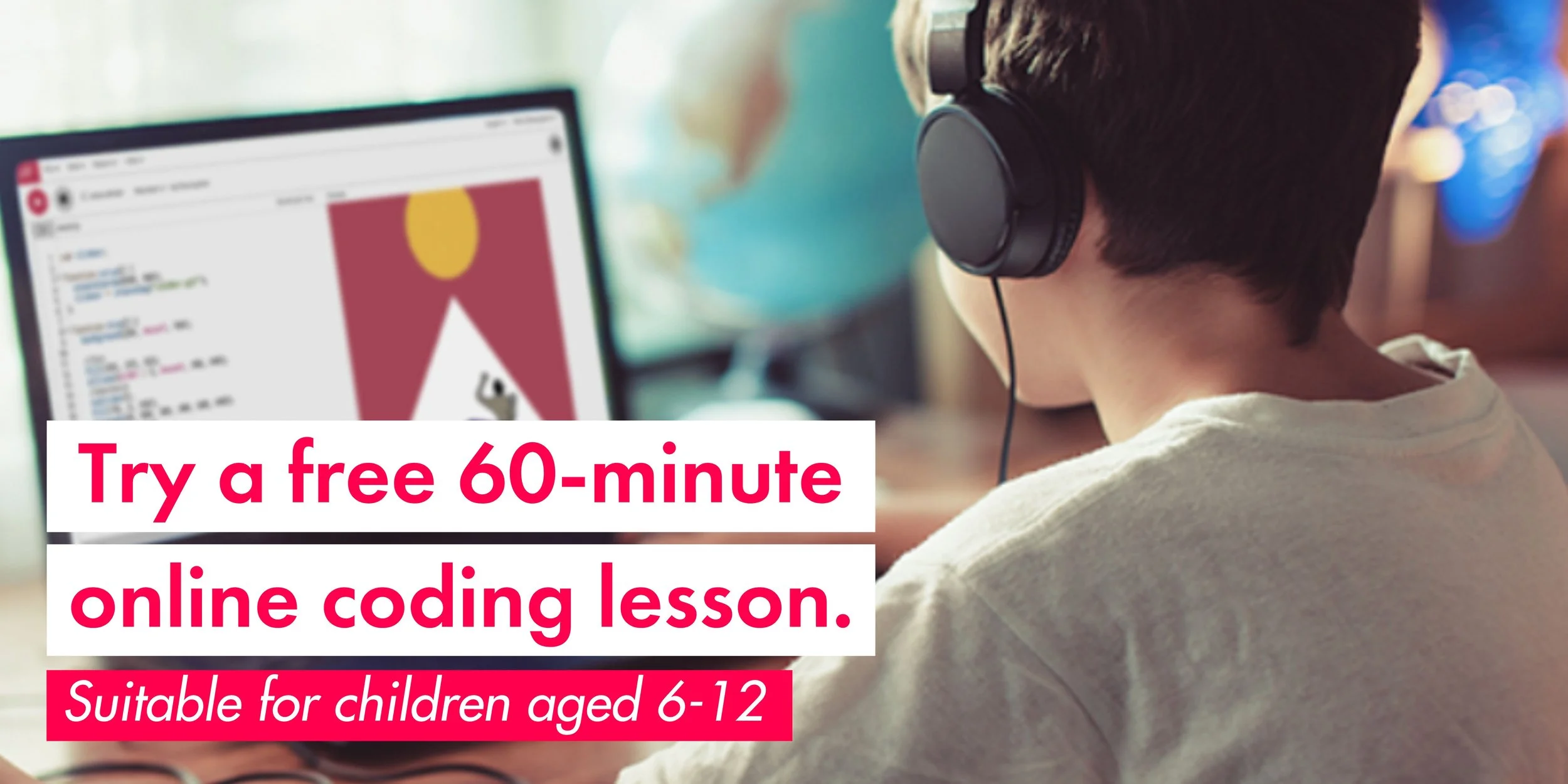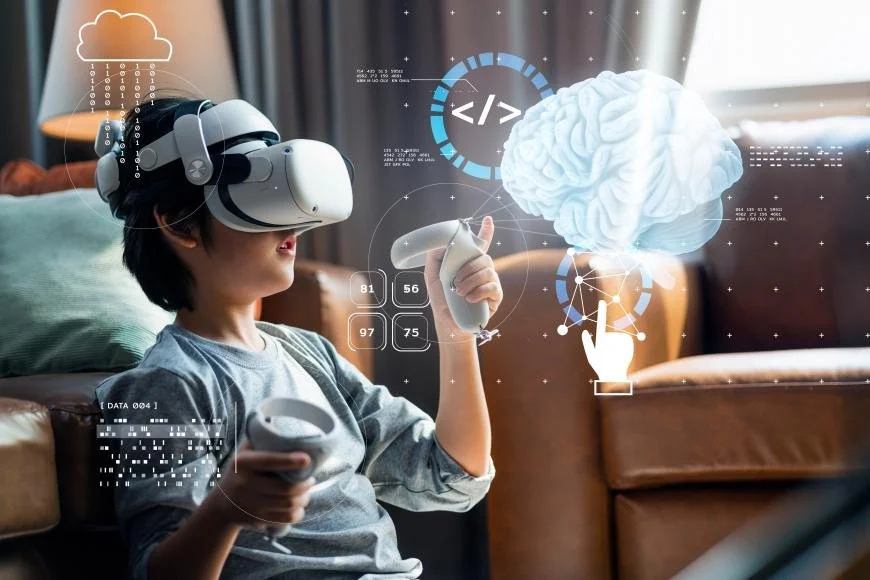How Can I Teach My Child About AI? A Guide to Introducing Artificial Intelligence to Kids
In today's rapidly evolving technological landscape, artificial intelligence (AI) has become a ubiquitous part of our lives. From voice-activated virtual assistants to recommendation algorithms, AI is shaping the way we live and work.
As parents, it's essential to prepare our children for a future where AI will play an even more prominent role. The digital landscape has changed so much and it’s hard for us as parents to keep up with our Gen Z kids, let alone help them navigate AI!
Teaching your child about AI not only fosters their digital literacy but also empowers them to navigate the digital world confidently. We’re here to help…in this article, we're sharing the basics with you and exploring practical strategies with some actionable tips to introduce your child to AI in an engaging and educational way.
Start with the Basics: The fundamental concepts of AI in simple terms
Learning: AI systems can learn from data. It's like teaching a computer to recognize patterns or make decisions based on examples.
Reasoning: AI can use the knowledge it has learned to make logical decisions. Think of it as the computer thinking through a problem like a human would.
Problem Solving: AI can solve complex problems by breaking them down into smaller, manageable tasks. It uses algorithms (step-by-step instructions) to find solutions.
Perception: AI can understand and interact with the world through sensors like cameras and microphones. It's like giving the computer senses to see, hear, and interpret its surroundings.
Natural Language Processing (NLP): This is about teaching computers to understand and communicate in human language. It's what makes chatbots and voice assistants possible.
Computer Vision: AI can analyze and interpret visual information from images and videos. For example, it can recognize faces, objects, or even read handwritten text.
Robotics: AI can control robots and automated systems to perform tasks, from manufacturing to exploring space.
Neural Networks: These are computer systems inspired by the human brain. They are used for tasks like image recognition and language translation.
Big Data: AI often needs a lot of data to learn and make accurate predictions. Big data is the massive amount of information that AI can use to improve its abilities.
Ethics and Bias: It's important to consider the ethical implications of AI. Sometimes, AI can learn biases from data, which can lead to unfair or harmful decisions. Ensuring AI is used responsibly is a key concept.
These fundamental concepts form the basis of how AI works and what it can do, although it continues to evolve.
Explore Real-World Applications: How is AI used in every day life?
AI in healthcare…it’s like having a smart helper for doctors. It can look at medical pictures, like X-rays, and find problems faster. It also looks at a person's information to suggest the best treatment. Think of it as a special assistant for doctors that can make healthcare better and more personalized.
AI in Finance…AI helps keep your money safe! It can look for strange things in your bank account, identifying any strange behaviour to prevent people stealing your money. It can also make smart decisions about buying and selling stocks to make more money. It's like having a money expert to keep your finances safe and grow your savings.
AI in Transportation…AI is making transportation safer and easier. It helps self-driving cars and drones drive on their own, like a robot chauffeur. It can also make traffic move better by changing traffic lights based on how many cars are on the road. So, AI is like a traffic manager and a driver for the future.
AI in Entertainment…AI makes your entertainment more fun. It suggests movies, music, and shows you might like based on what you watched before. It can also create cool things like art and stories. So, it's like having a friend who knows exactly what you'll enjoy for your entertainment.
AI in Education…AI has the potential to transform education in many ways, personalising education content to meet a students needs and styles, assessing students understanding and skills through automated testing and grading, assisting teachers with administrative tasks and providing insight into performance. AI also makes education more accessible to students with disabilities for example assisting students with visual impairments. AI can also generate educational content such as quizzes, exercises and help with research.
In simple words, AI is like a smart friend who helps in different parts of life, from staying healthy and managing money to making travel safer and finding fun things to do. It uses computer smarts to make life better and more convenient.
Embrace Interactive Learning
Engage your child with hands-on activities and games. There are various eduational apps and websites designed to teach AI to kids. These platforms use interactive games and puzzles to help children understand AI principles.
Encourage Questions
Invite your child to ask questions about AI and answer to the best of your ability. If you're unsure, explore the topic together and learn alongside your child. This can be a valuable bonding experience.
Foster Critical Thinking
Teach your child about the ethical implications of AI and encourage them to think critically about the impact of AI on society such as:
the positive automation of repetitive and mundane tasks, which boosts productivity and frees up humans for more creative and complex work
the optimization of energy usage, contributing to a more sustainable future and to consider how it can be used responsibly.
Of course AI does have some challenges and concerns so it’s good to be aware of these too such as:
Automation and AI leading to job displacement in certain industries requiring workers to acquire new skills
AI systems can inherit biases from their training data, so ensuring fairness in AI is a challenge.
DIY AI Projects
Engage in DIY AI projects together. You can explore coding and robotics kits designed for kids, like Scratch or Raspberry Pi. These hands-on experiences will demystify AI and enhance their problem-solving skills.
Explore AI in Popular Culture
Watch movies or read books that feature AI characters or themes, such as "Wall-E," "Big Hero 6," or "I, Robot." Discuss these stories with your child and encourage them to reflect on the AI-related themes.
Connect with Experts
If possible, introduce your child to AI experts or enthusiasts who can share their experiences and insights. Attending local tech events, webinars, or workshops can provide valuable exposure. Some of our Coco Coders weekly coding classes use AI so it is a great introduction and our expert teachers can help explain and get children excited about creating games using AI themselves.
Stay Updated Together
Keep up with the latest developments in AI as a family. Share interesting articles or news stories and discuss them during family dinners. This habit can help your child stay informed and engaged.
Conclusion
Teaching your child about AI is not just about preparing them for a tech-driven future; it's also about fostering their curiosity, critical thinking, and ethical awareness. By using interactive learning methods and exploring AI concepts together, you can further understand AI as a parent and empower your child to embrace technology responsibly and become a digitally literate citizen of the future. Understanding how AI works enables children and young people to engage with the changes AI applications are bringing to the world, and choose what role AI should play in their futures. So, start the journey today, and watch your child's understanding of AI grow along with their curiosity about the world of technology.



